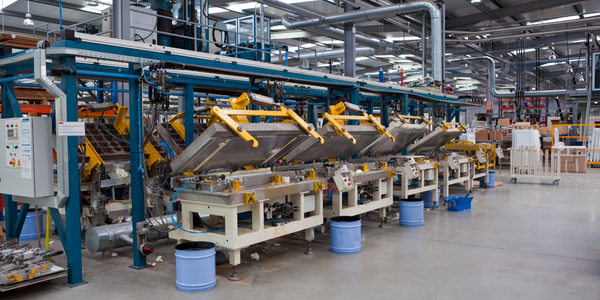Use Cases
- Personnel Tracking & Monitoring
- Time Sensitive Networking
Services
- System Integration
About The Customer
Dingle Hospitality Group is a hotel group based in Ireland, with over 50 employees across six locations. The group is comprised of five hotels and a laundry service, offering high-quality service, luxurious accommodation, and old-world charm. The hotels cater to a wide range of guests, from couples and families to wedding guests and corporate groups. Each hotel features individually designed bedrooms equipped with the latest technology, sustainable practices, and stylish designs. The group is committed to providing a 4-star service to all guests, whether they are visiting for the day, staying overnight, on business, or for pleasure.
The Challenge
Dingle Hospitality Group, a hotel group located in Ireland, was facing significant operational challenges with their existing employee management software. The software was difficult to use and did not integrate with their payroll provider, Sage, causing inefficiencies and complications in payroll management. The scheduling feature of the software was also problematic, often leading to confusion due to the increasing number of staff. The software did not provide visibility over projected wage spend, and schedules were approved based on the number of hours scheduled rather than commercial factors like labour cost or wage percentage. Additionally, there was no formal process for staff to request time off, leading to miscommunications and wasted time as managers had to sift through text messages to track who had requested time off.
The Solution
In search of a more efficient solution, Dingle Hospitality Group turned to Bizimply. The cloud-based system offered a more user-friendly interface and integrated seamlessly with Sage, their payroll provider. This integration allowed for quick and efficient delivery of payroll-ready exports of attendance data. Bizimply also provided accurate reports, enabling Dingle Hospitality Group to analyze their business performance across all locations and identify areas in need of improvement. The software also improved the process of scheduling and managing time off. Staff could submit their requests through the app, and even indicate recurring days when they were unavailable to work. The implementation of Bizimply led to improved communication between managers and teams, and employees recognized the benefits of the software in getting their jobs done more efficiently.
Operational Impact

Case Study missing?
Start adding your own!
Register with your work email and create a new case study profile for your business.
Related Case Studies.

Case Study
Goldcorp: Internet of Things Enables the Mine of the Future
Goldcorp is committed to responsible mining practices and maintaining maximum safety for its workers. At the same time, the firm is constantly exploring ways to improve the efficiency of its operations, extend the life of its assets, and control costs. Goldcorp needed technology that can maximize production efficiency by tracking all mining operations, keep employees safe with remote operations and monitoring of hazardous work areas and control production costs through better asset and site management.

Case Study
Cisco Kinetic for Oil and Gas: Refineries and Plants
The plant manager and safety teams needed a solution that provided near real-time visibility of gas detection and personnel location, with easy to understand visualization and alerting dashboards. This would enable them to improve productivity through decreasing the time taken to start work, optimize evacuation route planning, and to meet critical staff safety and compliance goals.

Case Study
Industry 4.0 at ALPLA: Enhancing Factory Efficiency with IoT
ALPLA, a global leader in packaging solutions, faced several challenges as the complexity of their production machinery increased. The need for highly trained specialists in each factory led to higher personnel costs, difficulties in recruiting experienced talent at each location, and costly personnel turnover. Furthermore, less experienced operators running the machines sub-optimally impacted resource consumption and overall equipment effectiveness (OEE). ALPLA also faced the challenge of monitoring visual inspection systems in every line of their plants, which was almost impossible to do manually. In 2016, ALPLA decided to use data from the 900 different types of embedded sensors in each factory to address these issues. However, their initial choice of SQL Server as the data store for the sensor data proved inadequate, as it was unable to cope with their data requirements.

Case Study
Digital Transformation of Atlanta Grout & Tile: An IoT Case Study
Atlanta Grout & Tile, a Tile, Stone & Grout restoration company based in Woodstock, Georgia, was facing challenges with its traditional business model. Despite steady growth over the years, the company was falling behind the web revolution and missing out on the opportunity to tap into a new consumer base. They were using independent software from different vendors for each of their department information and workforce management. This resulted in a lot of manual work on excel and the need to export/import data between different systems. This not only increased overhead costs but also slowed down their response to clients. The company also had to prepare numerous reports manually and lacked access to customer trends for effective business decision-making.

Case Study
Centralizing Data for Improved Efficiency: A Case Study on Malvern Panalytical
Malvern Panalytical, a UK-based hi-tech electronics company, was grappling with the challenge of decentralized data storage. The company had a vast amount of unstructured data scattered across various platforms, from hard drives to emails and floppy disks. This made the data searching process extremely cumbersome and inefficient. The company's rapid growth, from 200 to over 1,000 employees in a decade, and expansion across three continents further exacerbated the need for a more structured and centralized data system. As a company involved in electronics manufacturing and software development, it was crucial for Malvern Panalytical to find a platform that could structure all their data, track all modifications of documents in real time, and provide clear visibility of the internal information flow across all its facilities.








